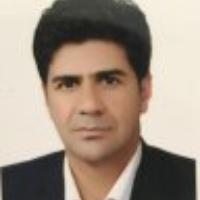Spatial Analysis of the distribution of gender poverty in urban spaces of Tabriz
Author(s):
Abstract:
Urban poverty is the greatest challenges of global development. If the current adverse trends continue، over the next years، two billion people will be residents of impoverished areas. Today، Tabriz city as the fifth most populated city of Iran is experiencing rapid urbanization and urbanism which this leads to lack of services and facilities available to citizens and the objectivity of poverty can be found in areas، like Yousef Abad، Khalil Abad، etc. Now more than half the world's population live in cities. That One of the main challenges facing cities in the twenty-first century، the focus of poverty in cities. Urban poverty especially in developing countries، is expanding faster and higher volume. Poverty reduction is a global concern. Now part of the urban poor is rising. Urban poverty threatens urban communities despite all the global and national programs to combat it as social problem and omnipotent force and it organizes cities with chaotic effects. Urban poverty has a gender specified dimension. Gender perspective into poverty increases the perception of poverty as causes with this perspective goes beyond the descriptive analysis of the causes of poverty. So check the status of gender and the spread of urban poverty and ways to improve the current conflict. Feminization of poverty is one of the main problems of the present time That has captivated millions of people to itself And among women in the world are victims of bitter poverty However، due to lack of information about the various groups of poor women in the analysis of this phenomenon is not well but، limited information is also indicative of the fact that it is shocking and grievous That far more women than men suffer from the problem of poverty. The statistical population is legal range of Tabriz city in 2006 and our sample size is 2006 statistical blocks. The research method is an applied، descriptive، comparative analytical. For recognizing and measuring poverty; spatial autocorrelation technique using hot spot analysis in Arc / GIS is used. To analyze the distribution patterns of urban poverty Moran statistic is used after showing indicators of social-economic status for both men and women، Moran index for these indices are calculated. Moran index for the socio-economic characteristics of men and women in 2006 were calculated based on the average of this indicator is equal to 0. 082076 and 0. 317598. Since the Moran index for both positive and close to one Also according to the p-value is very small we can conclude that the socal-economic indicators for both women and men are spatial autocorrelation and the measure of statistical blocks in the cluster are scattered. The index for the index z score equal to 5. 108197 in 2006 for men and women to show 15. 00557. Significant with respect to the point’s Z score، the spatial correlation indicitors of women are than men. Also paired T-test was used to determine the level of significance. The results indicate that a significant level of economic indicators for women and men equal to 0. 09 since this number is greater than 0. 05 and is therefore، there isn’t a significant difference between men and women in terms of economic indicators. But since the level of significance for social index is less than 0. 05، it can be concluded that no significant difference between men and women in terms of social indicators are. In order to recognitize Tabriz in perspective of spatial poverty organization، statistical blocks of year 2006 have been used for both group of mens and womens. Social-economic indicators used in this study، 15 indicators for both women and men that inclouded 6 social indicators and 9 economic idicators fore each group. Also results from the analysis of the data show the distribution of urban poverty in the city of Tabriz space obeys cluster model. Prosperous clusters tend to be close to downtown and poor clusters have been scattered on the outskirts. also The largest number of urban blocks for men group is poor blocks with 34% and for women group is very poor blocks with 47%. The fewer the number of blocks in the block for men and women is very comfortable that this block for men group has 1% and for women group has 5% in year 2006.
Keywords:
Language:
Persian
Published:
Journal Urban - Regional Studies and Research, Volume:7 Issue: 26, 2015
Pages:
43 to 64
magiran.com/p1456021
دانلود و مطالعه متن این مقاله با یکی از روشهای زیر امکان پذیر است:
اشتراک شخصی
با عضویت و پرداخت آنلاین حق اشتراک یکساله به مبلغ 1,390,000ريال میتوانید 70 عنوان مطلب دانلود کنید!
اشتراک سازمانی
به کتابخانه دانشگاه یا محل کار خود پیشنهاد کنید تا اشتراک سازمانی این پایگاه را برای دسترسی نامحدود همه کاربران به متن مطالب تهیه نمایند!
توجه!
- حق عضویت دریافتی صرف حمایت از نشریات عضو و نگهداری، تکمیل و توسعه مگیران میشود.
- پرداخت حق اشتراک و دانلود مقالات اجازه بازنشر آن در سایر رسانههای چاپی و دیجیتال را به کاربر نمیدهد.
In order to view content subscription is required
Personal subscription
Subscribe magiran.com for 70 € euros via PayPal and download 70 articles during a year.
Organization subscription
Please contact us to subscribe your university or library for unlimited access!



